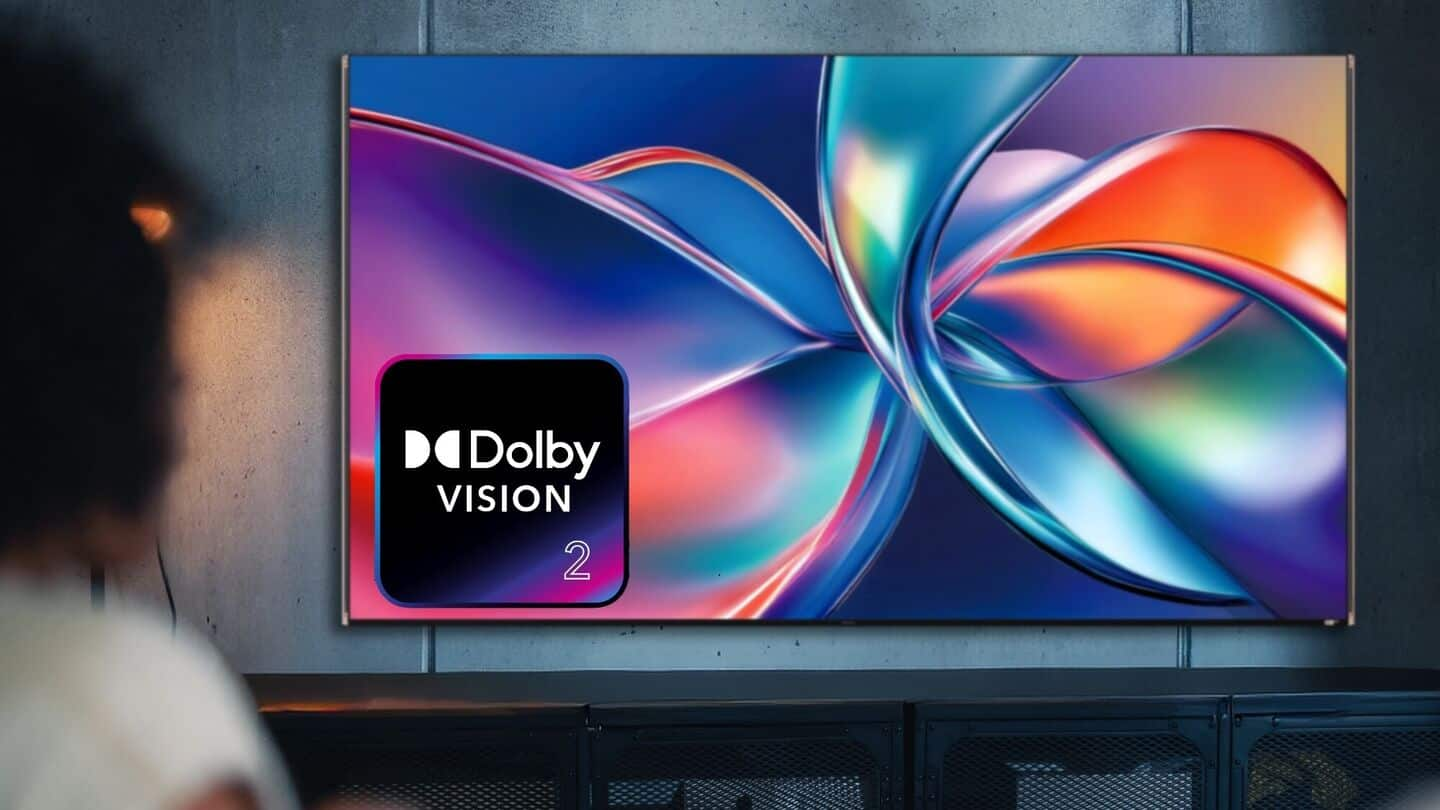
Why new Dolby Vision 2 HDR standard might be divisive
What's the story
Dolby has unveiled Dolby Vision 2, the successor to its popular high dynamic range (HDR) format. The new standard expands on the original's focus by including Content Intelligence and Authentic Motion, aiming to elevate the TV viewing experience. However, critics argue that dynamically adjusted color and motion might disrupt filmmaker intent, altering how content is meant to look.
AI integration
Content Intelligence will adjust content based on room brightness
Dolby Vision 2's Content Intelligence uses sensors in TVs and AI capabilities to make images "crystal clear" by improving clarity in any viewing environment without compromising intent. The feature will use ambient light detection sensors in supporting TVs to adjust the content's presentation based on room brightness. This could potentially solve the problem of shows being too dark on less-than-optimal setups, a common complaint among viewers.
Motion control
Authentic Motion aims to eliminate unwanted judder
Another major feature of Dolby Vision 2 is Authentic Motion, which Dolby describes as "the world's first creative driven motion control tool to make scenes feel more authentically cinematic without unwanted judder on a shot-by-shot basis." This could potentially solve the long-standing issue of motion smoothing or "soap opera effect," a feature that many casual viewers love but cinephiles and filmmakers despise for undermining artistic intent.
Market strategy
Hisense has already announced support for Dolby Vision 2
Dolby Vision 2 will be offered in two tiers: Dolby Vision 2 for low-end and mid-range TVs, and Dolby Vision 2 Max for high-end sets. Hisense has already announced its support for the new standards in upcoming TVs. However, there are still many unanswered questions about how these features will differ across different TV models and what impact they will have on viewing experiences.